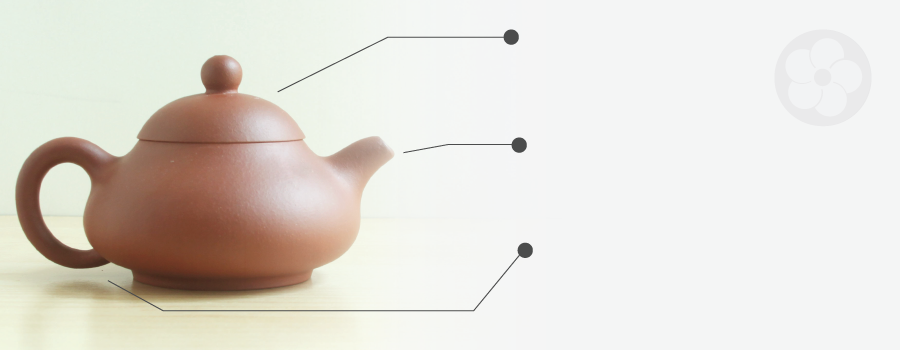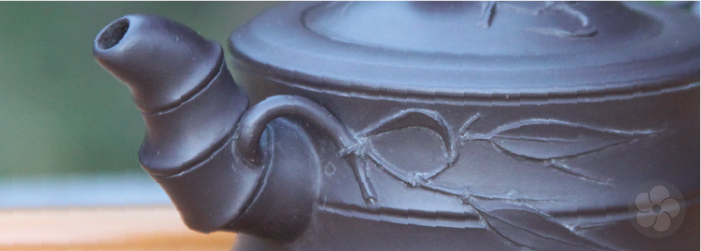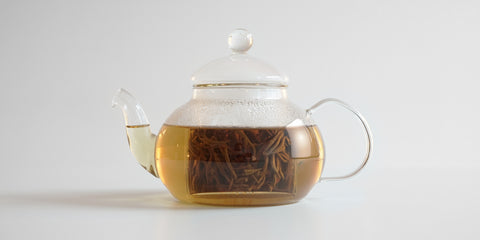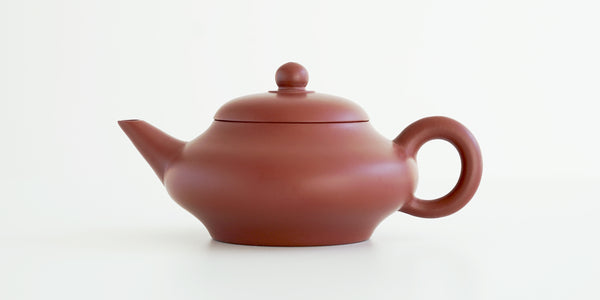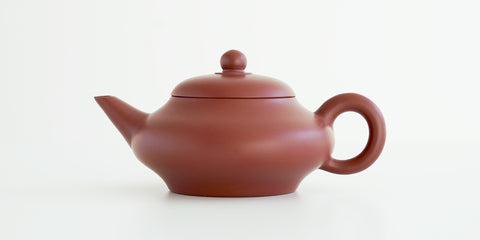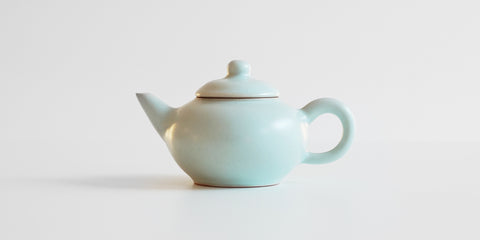|
IDENTITY >
|
ADVANTAGES >
|
HOW TO USE >
|
TEAPOTS TO TRY >
|
|
IDENTITY >
|
ADVANTAGES >
|
|
HOW TO USE >
|
TEAPOTS TO TRY >
|
What Is A Teapot?
Today, the teapot is the ubiquitous tea brewing vessel worldwide. But the familiar form wasn't actually developed until the Ming Dynasty. This was when tea drinkers began to brew whole leaf teas rather than powdered teas. For these new whole leaves, tea drinkers needed a new brewing vessel. The teapot was the ideal design. It had a well fitted lid to keep in heat, a narrow spout to act as a strainer, and a handle to hold the hot vessel.
The city of Yixing is generally considered to be the birthplace of the teapot form we know today. The zisha or “purple clay" pots produced there are still revered among drinkers of Chinese tea.
Traditional Chinese teapots, including those from Yixing, are quite small. In fact, they usually hold no more than 6 to 8 ounces. Adding water to the same leaves several times created a single cup at a time for the tea drinker. Each person carried his own teapot with him throughout the day.
Larger teapots appeared later, in countries where chopped tea leaves were popular. Broken tea leaves release flavor more quickly, and do not have as much flavor when re-infused. So instead of several small infusions, foreign tea drinkers brewed several cups at a time in a larger pot.
Advantages of Using Teapots
Teapots have become popular in tea drinking cultures around the world. But it is important to keep in mind that people drank tea for centuries without the use of teapots. So why, then, have they become such an integral part of tea drinking culture?
First, tea was brewed in and sipped from a single bowl. But many teas become bitter after steeping for long periods of time. The bottom of the bowl became more concentrated and bitter than the first few sips. The teapot spout had several small holes at the base, and created a perfect natural strainer. It was now possible to pour out the brewed tea and separate it from the leaves. This step stopped the steeping process, and kept the tea tasting sweet.
The traditional bowl also had a wide, open mouth, which caused the tea to cool as it was brewed. Using a closed vessel with a lid created better heat retention. With more heat, the leaves released fuller flavors, and the tea stayed warm for drinking. Combined with the straining spout, this allowed more control over the flavor of the brew.
Finally, the handle of the teapot was designed to keep the brewer’s fingers cool while pouring the tea. Before, hot bowls balanced on tall stands with wide, flared rims. The stand would elevate the bowl from the brewing surface and provide a place to hold as the tea brewed. But these stands were not actually part of the body of the bowl. They were much less stable than the handle of the teapot.
When tea was first exported to Europe at the end of the Ming Dynasty, teapots were exported with the leaves. They quickly caught on in the west as the most practical way to brew. By the end of the 1600’s, tea was experiencing a surge of popularity in Britain, and the English teapot was born. It boasted a larger volume and finer strainer for brewing chopped leaves.
As tea drinking became a national hobby in Britain, teapot designs became extravagant. Over time, the decorative pots culminated in complex forms that hardly look practical. Today, the teapot is recognized as one of the most difficult forms for a potter to make. Many teapots are produced purely for decoration.
Elaborate forms became popular among traditional Chinese makers in the 20th century. As in England, teapot crafting has become an art form independent of actual tea brewing. Chinese teapots today are often etched or carved with characters or nature scenes. Some are even even shaped to resemble plants and animals. Decorative details can be stunning, but practical features are what make a good brew. Look for a tightly fitted lid and a pointed spout to avoid dribbles. Also, pay attention to the shape and size of the handle for balance when pouring.
How To Use A Teapot
No matter what shape or size, most teapots function in roughly the same way. Tea leaves and hot water are added inside the pot, and left to steep. Then, the brewed tea is poured away through the spout. But the ideal way to use a teapot can vary based on the pot’s functional details.
Chinese teapots, which are generally small in size, are perfect for brewing whole leaf tea in a gong fu cha style. Water is repeatedly added to the same tea leaves to create several infusions. These pots usually have several small holes pierced at the base of the spout. They create a natural strainer, but can clog with broken or chopped leaves.
Larger, western style teapots are often made with some sort of basket that sits in the mouth of the pot. Water is poured over the leaves and filters through the basket to the body of the pot. Infuser baskets provide a finer strain, and are best for holding smaller pieces of tea leaves. Since the tea does not flow freely in the body of the pot, these teapots use only one large hole at the base of the spout. These larger teapots can be used for whole leaf tea as well. But it is important to make sure that whole leaves have plenty of room for expansion. Constricting the leaves within the infuser will sacrifice flavor.
No matter what kind of pot is used, we recommend removing either the water or the leaves after no more that 2 or 3 minutes. Even if the color is light, it does not reflect the strength of flavor. Short brews avoid bitterness and astringency in the tea. Steeping this way should produce a brew that tastes good even without milk and sugar.


